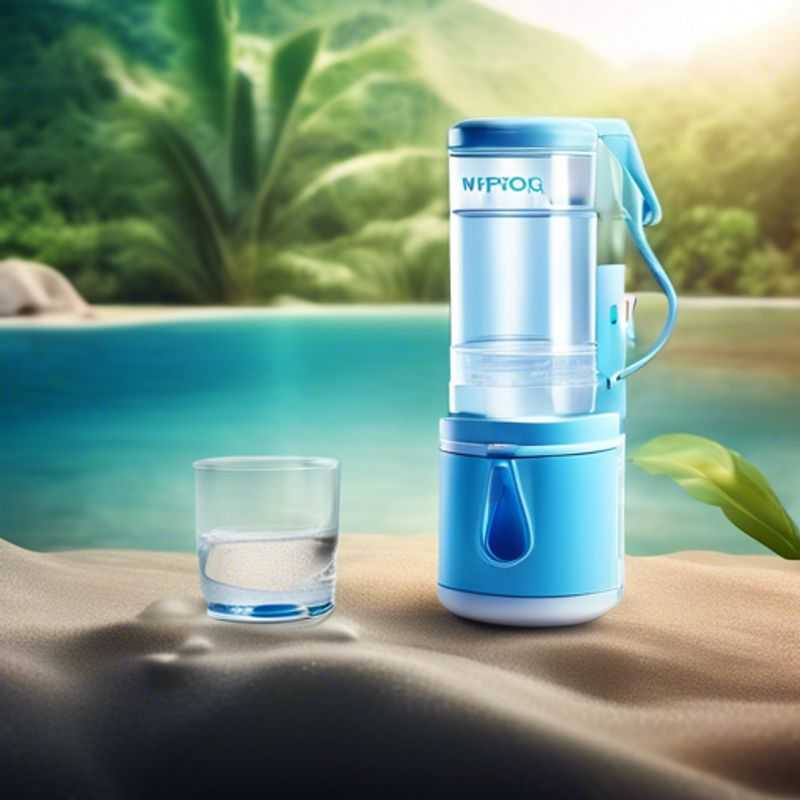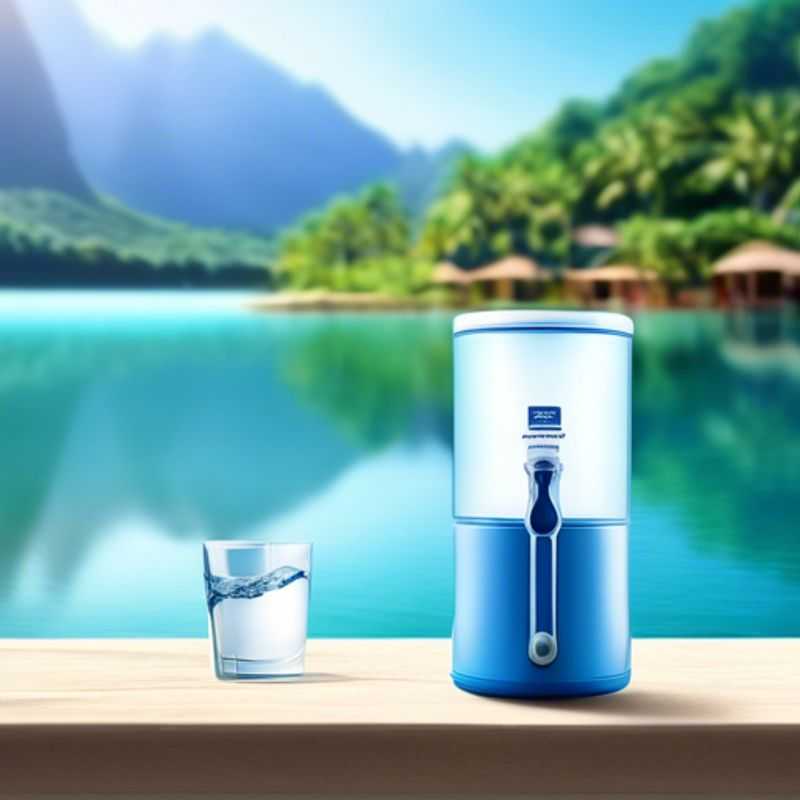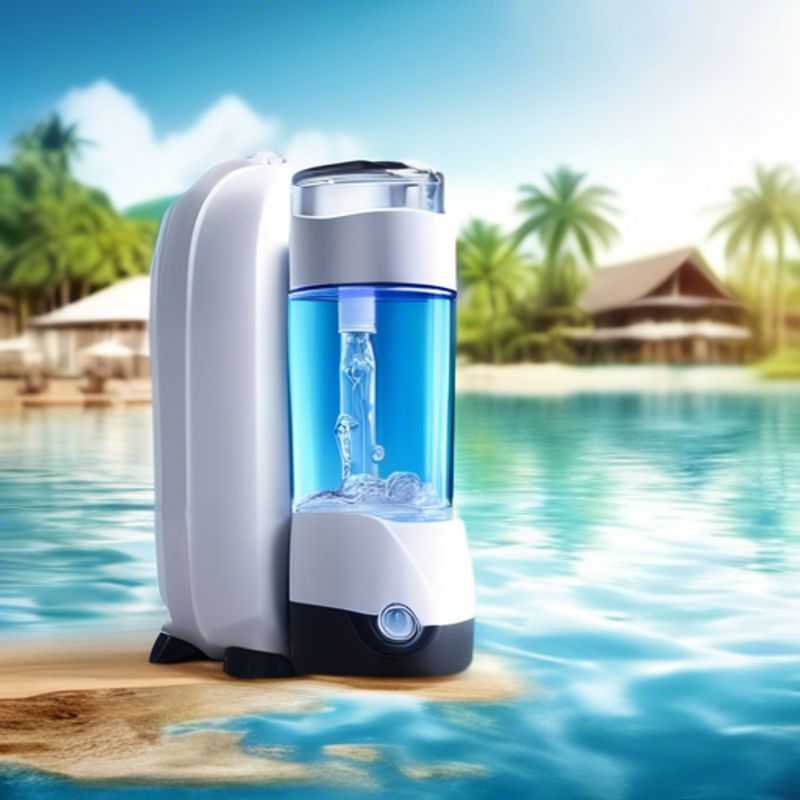7 Things You Need to Know Before You Buy a Portable Water Purifier or Filtration System

7 Tips to Conquer the World of Portable Water Purifiers:
Ah, the thirst for pure, refreshing water! We've all been there, searching for that perfect sip on a hot day or during a wild adventure. But before you dive into the world of portable water purifiers and filtration systems, let me share some insider tips. These are the things I wish I knew before embarking on my own water-purifying journey.
First things first, understand the different types of purification technologies and their effectiveness.
Before purchasing Portable Water Purifier or Water Filtration System
- Understand the different types of water purification technologies and their effectiveness. From reverse osmosis to UV disinfection, each method has its own strengths and weaknesses. Research the options to find the one that best suits your needs.
- Consider the capacity and flow rate of the water purifier to match your usage needs. Are you looking to purify water for a household or for individual use? The size and output of the system should align with your daily water consumption.
- Check the filter replacement schedule and cost to maintain the system. Replacement filters can add up, so factor in the long-term operating costs when selecting a model.
- Look for certifications from reputable organizations like NSF or EPA. These certifications ensure the water purifier meets strict safety and performance standards.
- Evaluate the portability and ease of use for your specific requirements. If you plan to travel with the purifier, look for a lightweight and compact design. For home use, consider the installation process and overall user-friendliness.
- Research the water quality in your area to select the appropriate purifier. The contaminants present in your local water supply will determine the type of filtration system required.
- Compare the cost per gallon of purified water across different models. While the initial purchase price is important, the long-term operating costs can make a significant difference in the overall value of the water purifier.

From Tap to Sip: Demystifying Water Purification Technologies
Let’s talk water purification! You know, that magic trick that turns regular H2O into something you can actually drink without ending up with a case of the "ickies". There are a few different ways to make your water sparkle, and each has its own strengths and weaknesses. Think of it like choosing the right tool for the job, and the "job" here is keeping your hydration game strong.
First up, we have boiling, a classic and easy method. Heat that water to a rolling boil for a full minute to kill most harmful bacteria. It’s free, but it doesn’t tackle all contaminants like viruses or heavy metals. This is a good option for short-term use in emergencies, but not a long-term solution.
Next, we have filtration, which uses a barrier to trap unwanted particles. Think of those water pitchers with the filter cartridge – that’s a common example. They’re good for removing sediment, chlorine, and some bacteria. You can find filters for around $10-20 and they’re usually easy to replace.
Now, let’s step it up with distillation. This method boils water and collects the steam, leaving impurities behind. It’s a bit more involved, but it’s effective at removing almost everything. You’ll need a special still, which can be pricey (around $50-100), but it’s an excellent option for producing super-pure water.
Finally, we have reverse osmosis, the big leagues of water purification. This method uses pressure to force water through a semi-permeable membrane, leaving behind nearly all contaminants. Think of it as a water-powered sieve, super effective but requiring some investment. These systems can be more expensive (starting around $100), but they give you the most pristine water.
So, which method is right for you? It depends on your needs, budget, and the quality of your source water. Do some research, talk to your local water provider, and consider factors like taste, safety, and convenience. Happy hydrating!

Thirsty for Clean Water? Picking the Right Purifier Capacity &; Flow Rate
Alright, you savvy shoppers, let's talk about water purifiers! You want crystal-clear water, but how much do you actually need? That's where capacity and flow rate come in, my friends.
Think of capacity like the size of your water bottle. It tells you how much purified water the purifier can hold before needing a refill. Consider your household size and daily water consumption. A small family might be fine with a 1-gallon capacity, while a larger household might need a 5-gallon capacity.
Now, flow rate is like the speed at which the water comes out of the bottle. This tells you how many gallons per minute (GPM) the purifier can deliver. For quick refills, you'll want a higher flow rate. But remember, higher flow rates often come with higher price tags.
So, to sum it up, consider your daily water usage, household size, and your budget when choosing a water purifier with the right capacity and flow rate. You'll be sipping on pure, delicious water in no time!

Filter Check: Keeping Your System Running Smoothly and Saving Money
Alright, folks, let's talk about something that's often overlooked: filter maintenance! I know, I know, it's not the most glamorous topic, but trust me, keeping those filters in tip-top shape is crucial for your system's health and longevity. Think of it as giving your system a little TLC.
First things first: Check that manufacturer's manual! It's your go-to guide for the recommended replacement schedule. Typically, you're looking at every 3-6 months for air filters, depending on your environment. But hey, if you're living in a dusty, bustling city, you might need to swap them out even more frequently.
Now, the cost. It's not always a huge expense, but it's definitely worth factoring in. Expect to pay anywhere from $10 to $50 for a standard air filter. Of course, this can fluctuate based on the size and type of filter you need. For water filters, the price can range from $20 to $100, sometimes even more for specialty filters.
Beyond just the filters themselves, you might encounter other costs during maintenance. For instance, if your system needs a deep clean or if there are any parts that need replacing, you'll have to factor those in as well. But hey, a little preventative maintenance goes a long way. It's like giving your system a spa day—it'll thank you for it in the long run.

Shopping Smart: Look for Certifications from Reputable Organizations
When shopping for products, especially those related to health, safety, or the environment, it's a good idea to look for certifications from reputable organizations. These certifications can give you confidence that a product meets certain standards and has been independently tested. Two well-known organizations that provide these certifications are the NSF (National Sanitation Foundation) and the EPA (Environmental Protection Agency).
The NSF is a non-profit organization that sets standards and tests products for safety and performance. Their certifications cover a wide range of products, including water filters, kitchen appliances, and even toys. The EPA, on the other hand, focuses on environmental protection. Their certifications, such as the Energy Star program, help identify products that are energy-efficient and minimize their environmental impact.
Looking for NSF and EPA certifications can help you make more informed purchasing decisions. While it's not always possible to find certified products in every category, it's worth checking for these certifications when available. It's important to remember that certification costs can be factored into the price of a product, but the added assurance and peace of mind can be well worth the investment.

Finding Your Perfect Fit: Evaluating Portability and Ease of Use
Let's talk portability and ease of use! It's all about finding the right fit for your needs, you know, like finding the perfect pair of shoes for a long hike. When you're evaluating these aspects, consider the following:
Size and weight: How easy is it to carry around? Does it fit comfortably in your bag or backpack? This is crucial for travel or everyday use.
Interface and controls: Can you easily navigate the device or software? Are the buttons intuitive and responsive? The simpler and more user-friendly the interface, the better.
Power consumption: How long does the battery last? Can you easily recharge it on the go? This is especially important if you're traveling or need to use the device for extended periods.
Connectivity: Does it connect to your other devices easily? Can you use it wirelessly or does it require a physical connection?
Durability: Is it built to last? Can it handle bumps and spills? This is important if you're using it in demanding environments.
Keep in mind that there's no single "right" answer when it comes to portability and ease of use. It depends entirely on your personal needs and how you plan to use the product. So, take your time, do your research, and find the option that best suits your lifestyle and your adventures!

H2-Oh No! Research Your Water Before Choosing a Purifier
Hey there, water warriors! You know, clean water is like the secret ingredient to a good life. But how do you know if your water is playing nice? That's where knowing your local water quality comes in! It's like knowing the cast of characters in your water's story. Some places have harder water, some have more minerals, and some might have certain contaminants. You can usually find this information on your local water provider's website or by contacting them directly. Think of it as a treasure hunt – you're searching for clues about your water's backstory!
Once you've got the lowdown on your local water's personality, you can start picking the perfect water purifier. There are a few different types, each with its own superpowers! For example, carbon filters are great at removing chlorine and other bad actors that affect taste and smell. If you're battling hard water, ion exchange filters can help soften it up. And for those with a real taste for adventure (or a need for extra protection), reverse osmosis filters are like the superheroes of water purification! They can remove a wide range of contaminants, including bacteria and viruses. Remember, each purifier has its own strengths, so choose wisely based on your water's story and your own needs. It's like picking the right tool for the job!
And remember, this is just the beginning of your water purification journey! There are a ton of resources online and even some free or low-cost water testing kits available if you want to take a closer look. So, embrace the adventure and become the master of your own water destiny!

H2O Hustle: Comparing the Cost Per Gallon of Purified Water
Hey there, fellow water enthusiasts! Ever wondered which water purifier is the most cost-effective in terms of cost per gallon? You're not alone! It's a question I often get from people looking for the perfect balance between pure hydration and budget-friendly solutions.
So, how do you figure out the cost per gallon? It's a simple calculation, really. You take the price of the filter (including any replacement filters) and divide it by the total gallons of water the filter can produce. Sounds straightforward, right?
Now, here's the thing - the cost per gallon can vary wildly depending on the specific model and brand. Some models might offer a lower upfront cost, but their replacement filters could be pricier. Others may have a higher upfront cost, but their filters last longer.
Don't forget about the cost of the water itself. If you're using tap water, you're probably already paying a monthly fee for water. Factor that into your total cost to get a clearer picture of the overall expense.
Here's the bottom line: There's no one-size-fits-all answer. The best cost per gallon depends on your individual needs and water usage. Do your research, compare prices and features, and choose a water purifier that fits your budget and your thirst for clean, pure water!
